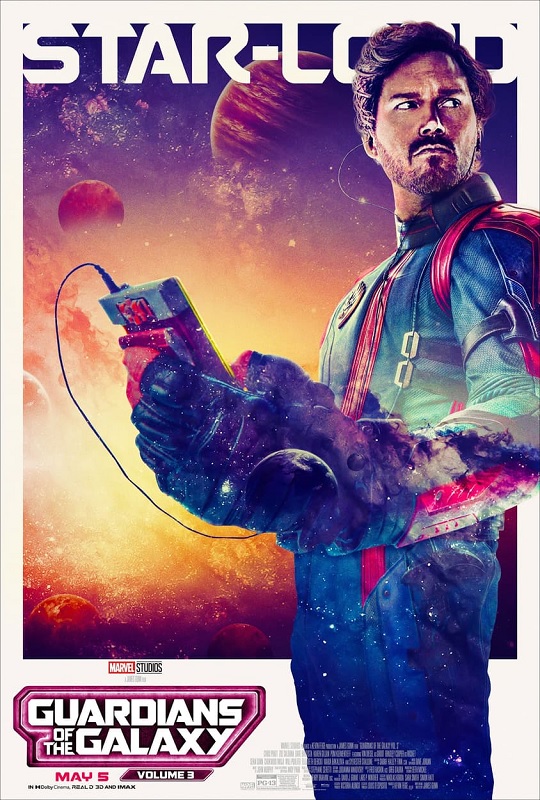

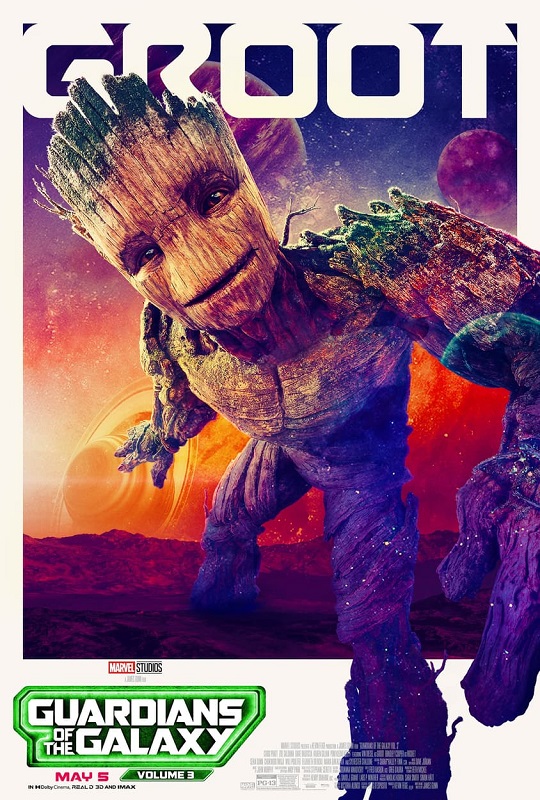
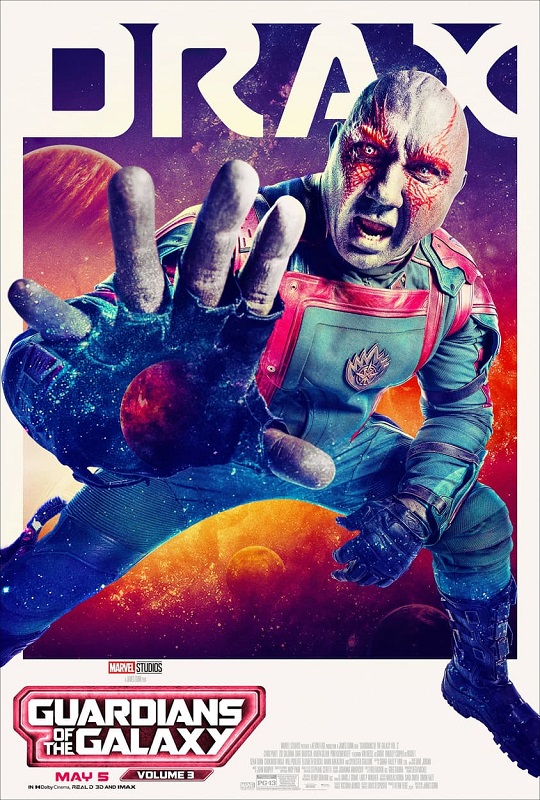
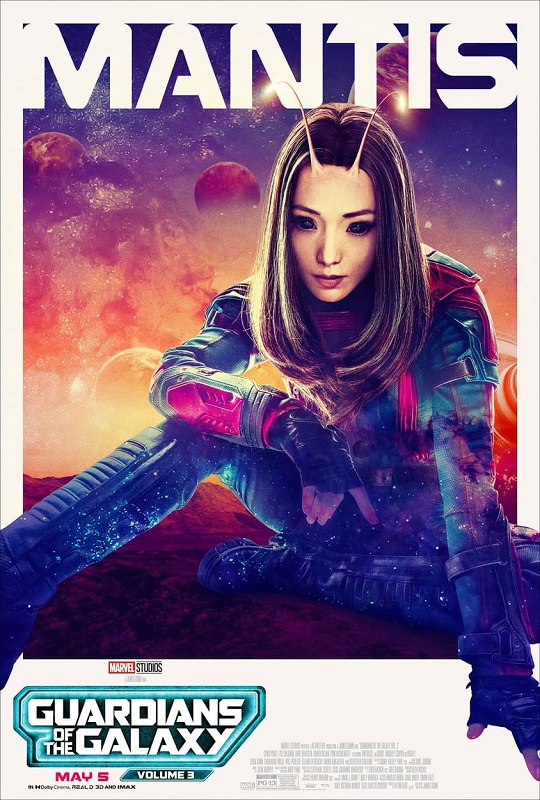
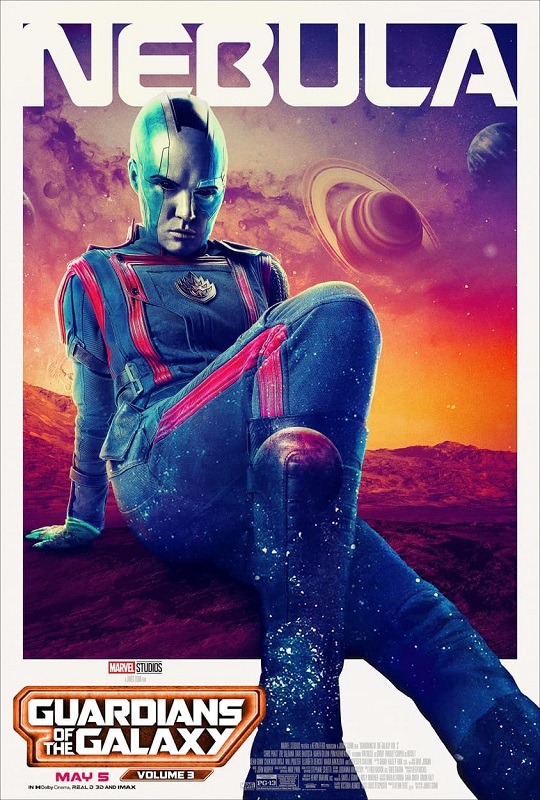
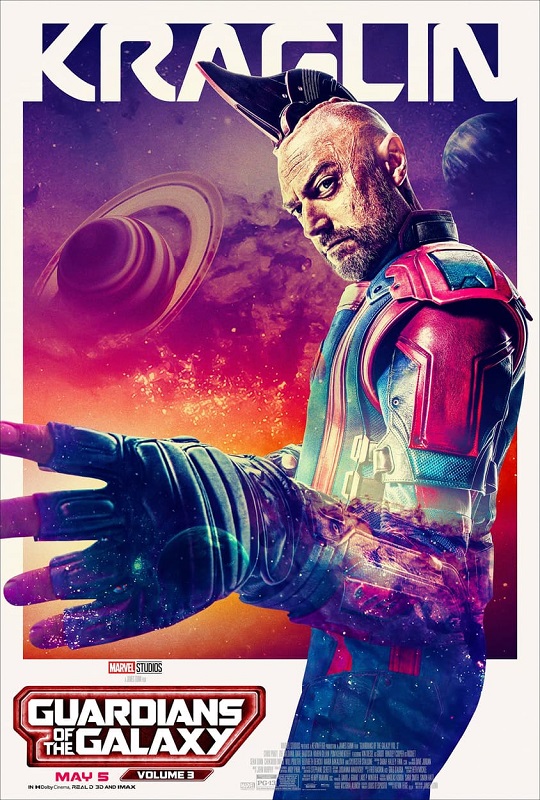
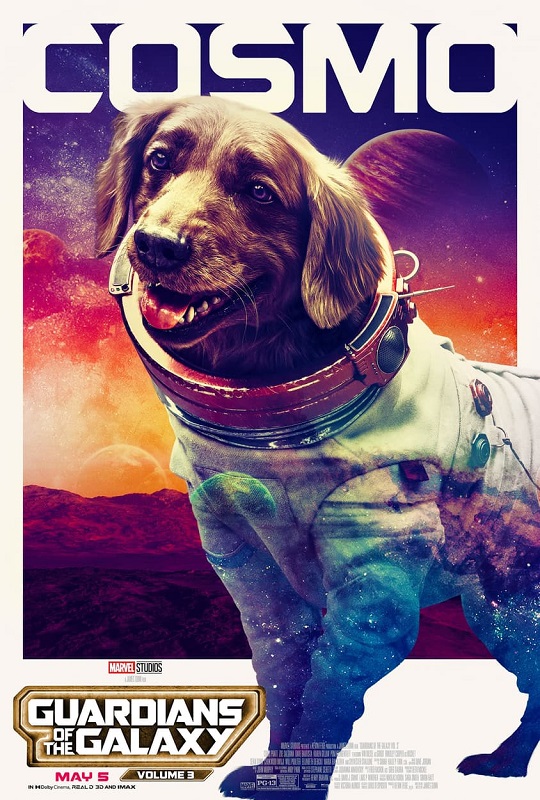
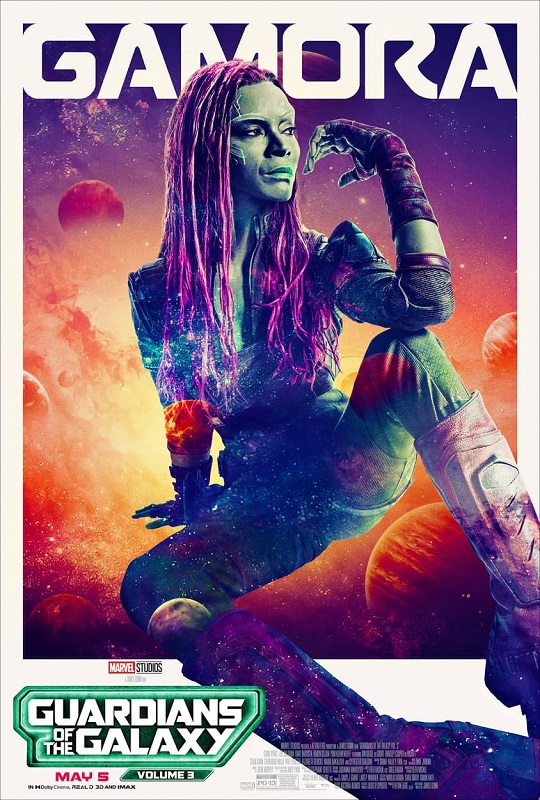









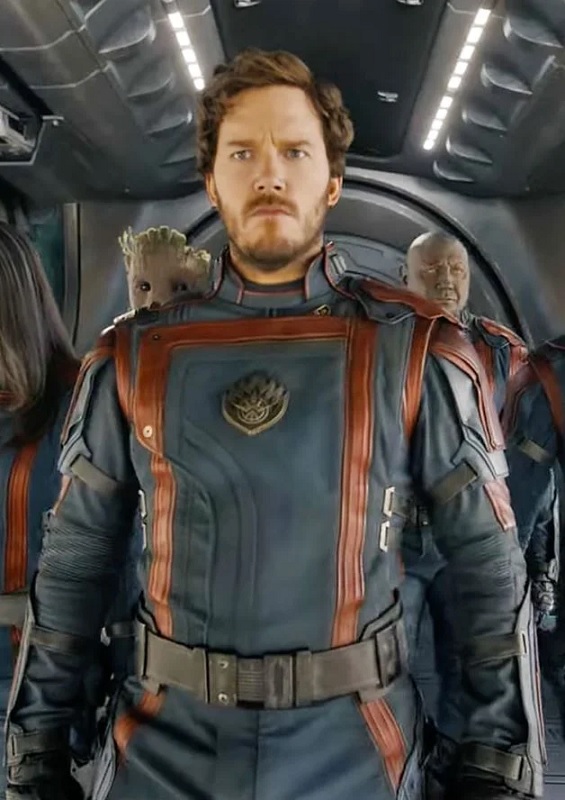
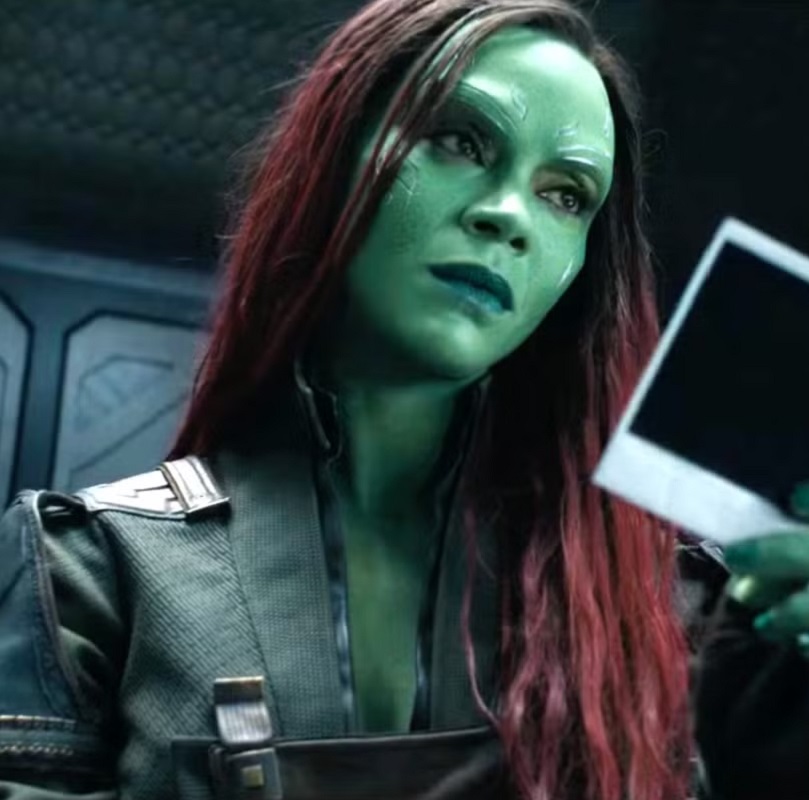
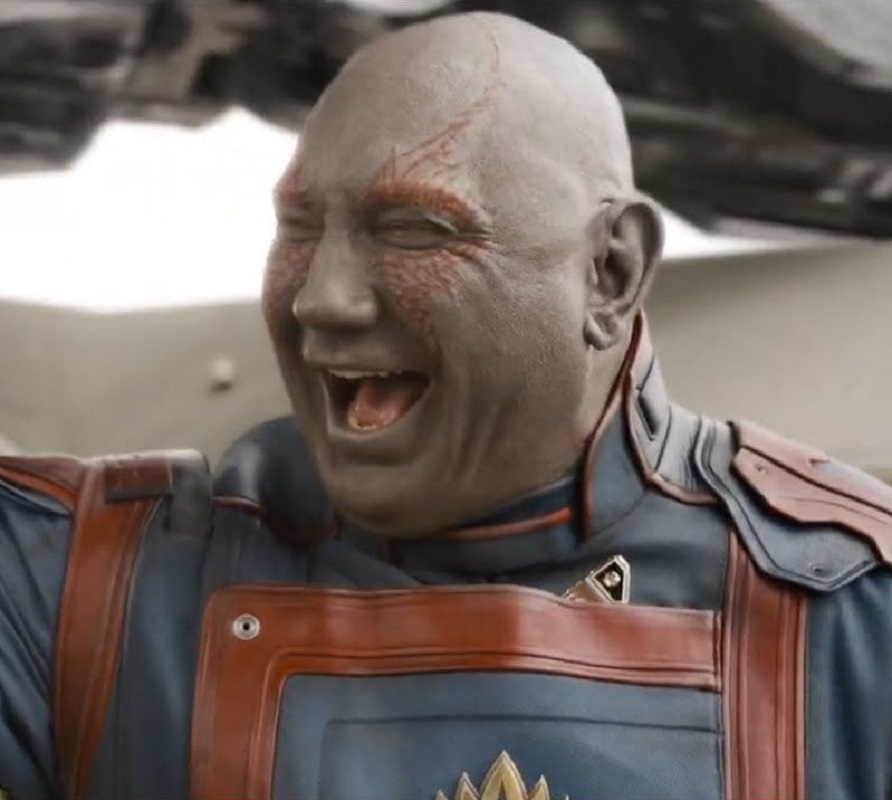
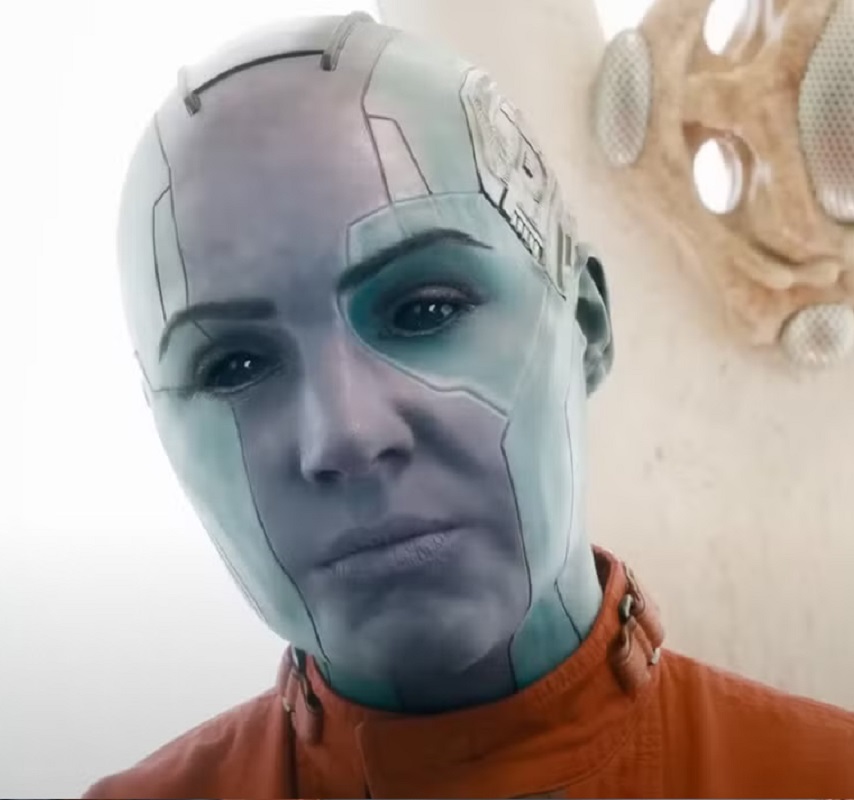

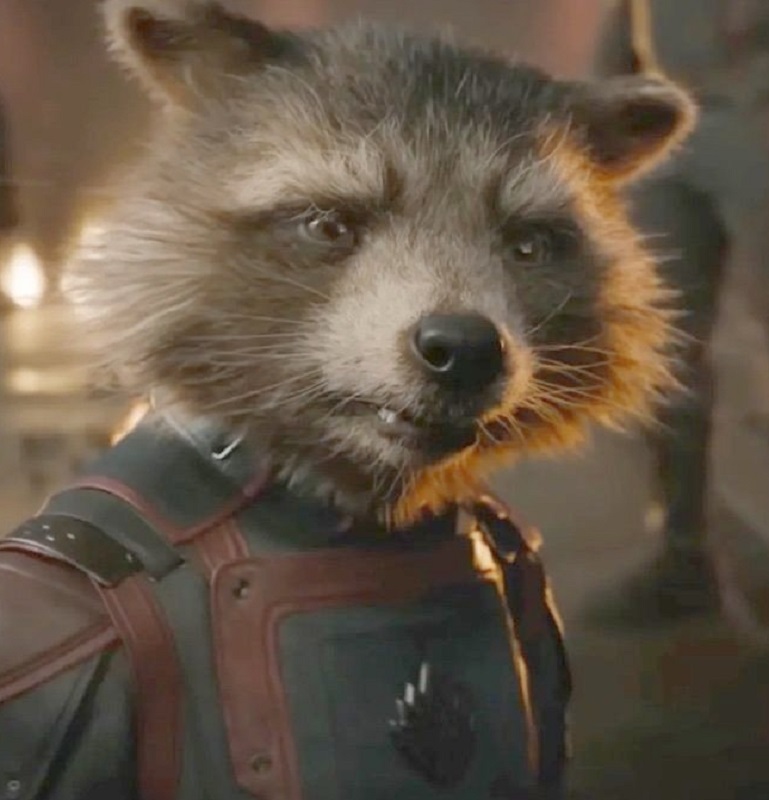
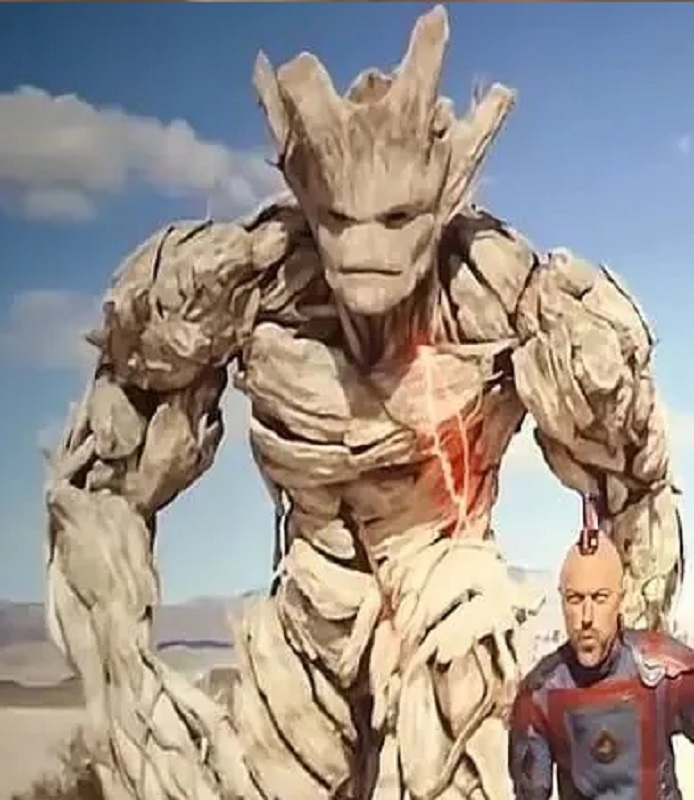
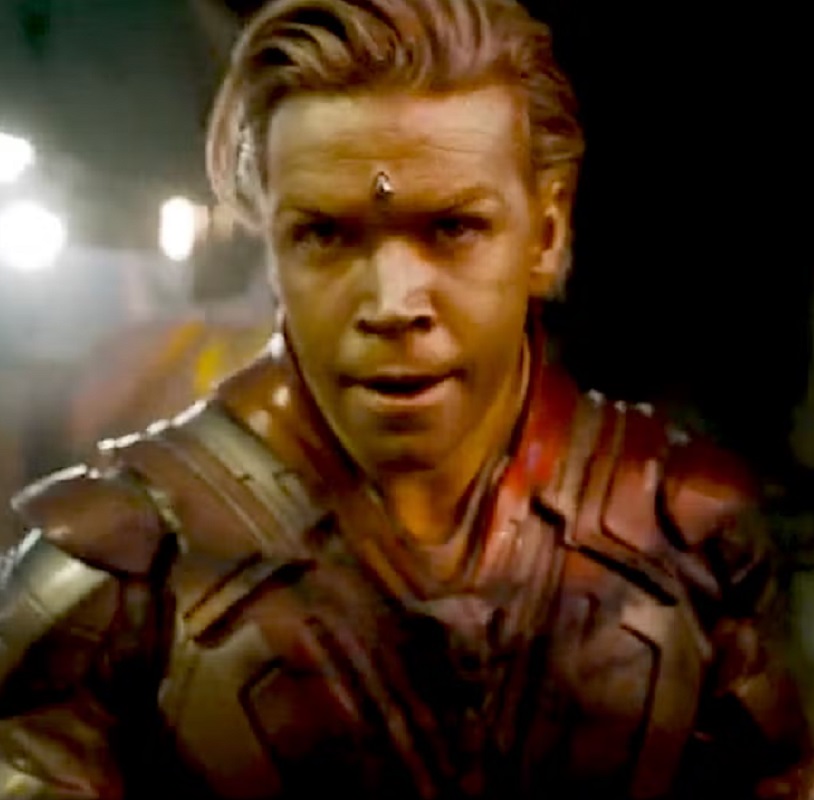
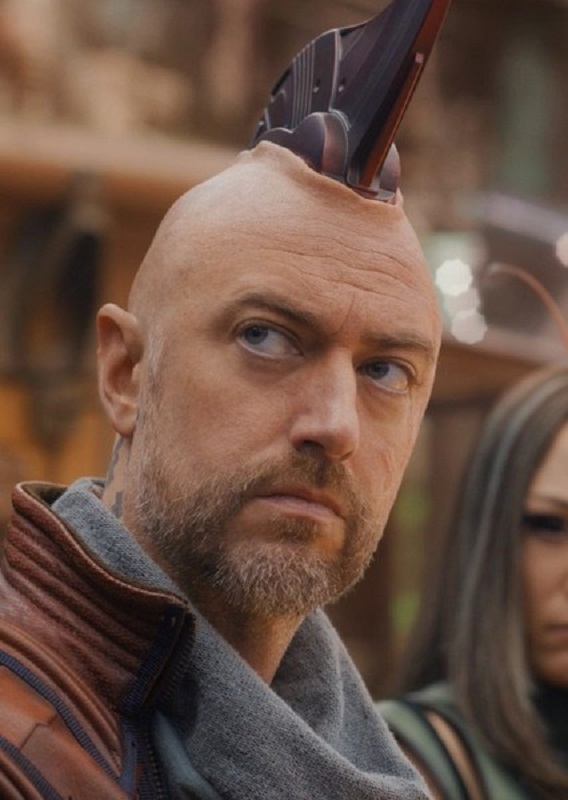
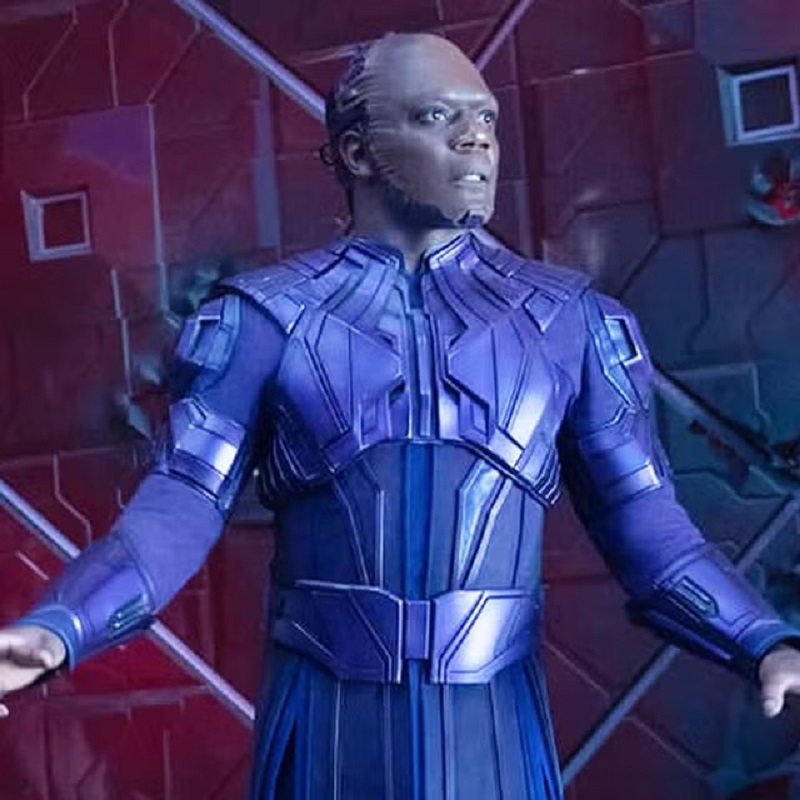

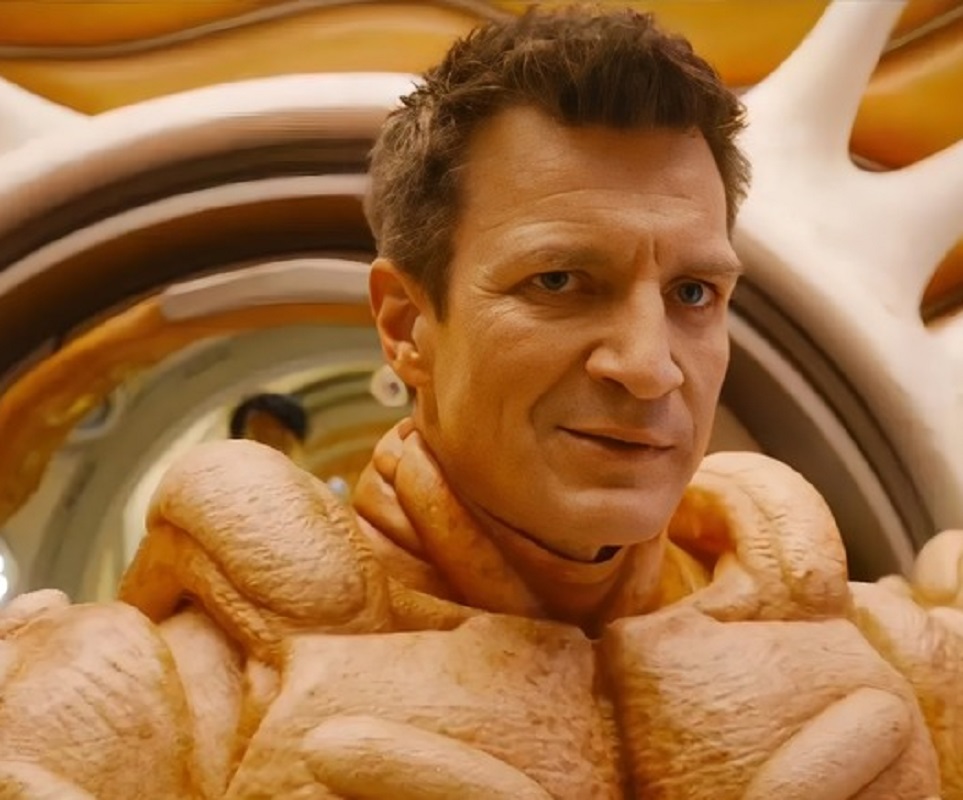
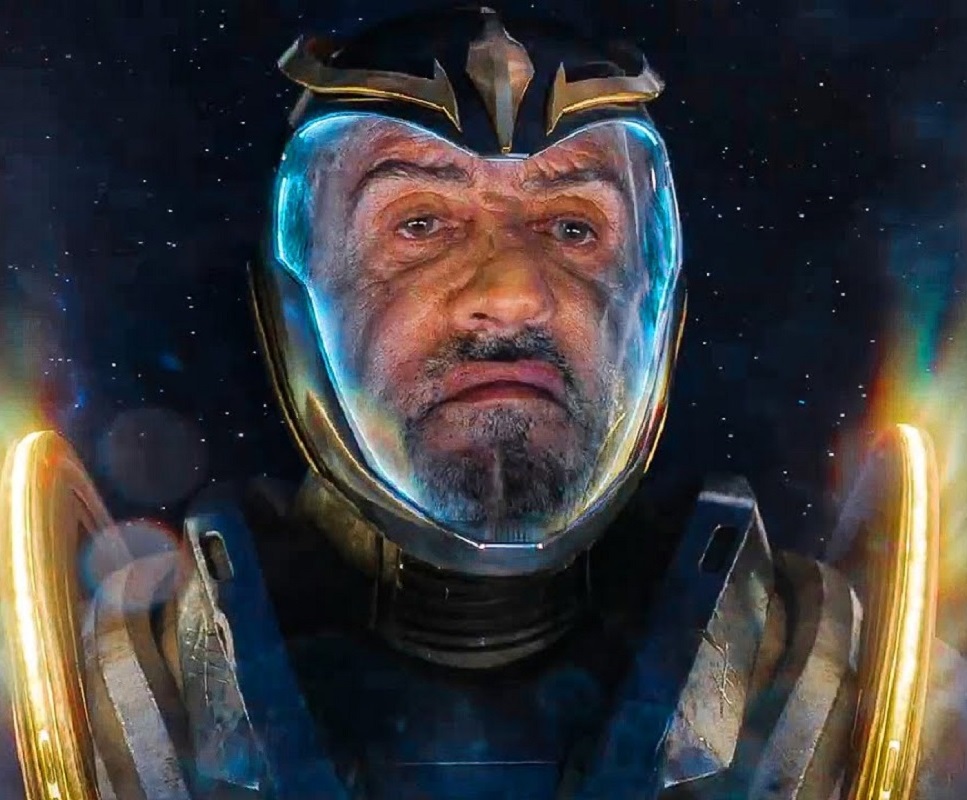
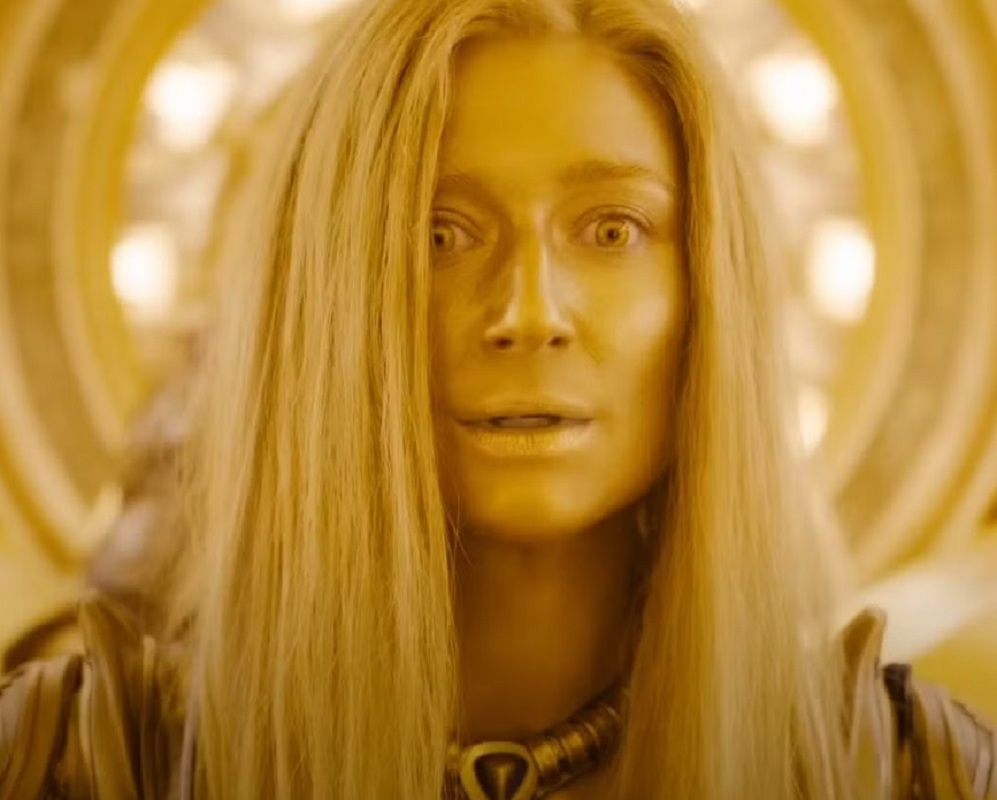


32 – Guardians of the Galaxy Vol 3
The first time I saw the third movie in the Guardians sub-franchise, it didn’t make that much of an impression on me. I’ve always thought it was good, but not as good as the other Guardians movies. But every time I have watched it, I have gained a greater appreciation for the fantastic emotional content of the story. A lot of this installment focuses on Rocket’s backstory, and to be sure, it is a heartbreaking story. The pain, suffering, and terrible loss that the character has endured is actually emotionally devastating, and this movie does a great job of taking us on that journey with him.
The ending also has a sense of closure as the core group we have come to know and love, which was fractured when Gamora died in Avengers Endgame, dissolves. Several members leave the family, as they call themselves. We lose Drax, Nebula, Mantis, and the variant version of Gamora, each of them going their separate ways. We even lose Star Lord, though a post credit scene indicates that he might return at some point. It feels like the ending of an era, though there is also the hope of a new beginning with a new roster. At the end of the movie, Rocket and Swole Groot are still with the Guardians, and they are joined by Kraglin, Cosmo, Adam Warlock, his pet Blurp, and Phyla, some of whom we know next to nothing about. Apparently Phyla is one of the children that was rescued from the main villain, but I have no idea what her abilities are, so it’s kind of hard to care who she is or how she will fit in to the future of the franchise.
Unfortunately, I think the biggest dropped ball in this movie was the character of Adam Warlock. In the comic books, he is one of the most powerful characters in the universe, a being with intelligence and depth. He has super strength, the power of flight, and can survive in the vacuum of space. But this movie portrays him as mentally and emotionally simplistic, like a child. He is used as comic relief, and little more. And the even had a fantastic actor to portray him, Will Poulter. He could have been so awesome, but he was actually pretty forgettable.
But at least they fixed one thing that the last Guardians movie did that always bothers me. In Vol 2, they turned Drax into the comic relief. He was nothing more than a moron who laughs at the dumbest things. I though he was supposed to be a bad-ass who kicks butt with the best of them. Well, here, we see him still being pretty dumb, but not as bad as before, and he proved that he is still a dangerous man. They gave him his teeth back, and I liked it.
Of course we have to get a new bad guy, and I think they did a pretty good job with this one. The High Evolutionary, played by Chukwudi Iwuji, was your basic mad scientist. He had no moral compass, no scruples, no respect for sentient life, and a penchant for cruelly torturing animals in his attempts to genetically create evolved species of life. I found it interesting to learn that it was he who was not only responsible for turning a baby raccoon into our beloved Rocket through years of painful torture and experimentation, but it was also he who created the race of the Sovereigns, who then created Adam Warlock. The High Evolutionary was so evil and despicable that you just can’t wait for him to get his comeuppance.
But really, the thing about this movie that stands out to me the most was the emotional content. The flashback scenes that show Rocket and his gentle Frankenstein monster friends as they form their own little group, were beautifully done. And then, when they are all murdered in front of him was just heart-wrenching. Rocket is in tears, and I cried right along with him. But there was also plenty of great action and the bright and colorful visual effects we have come to expect from a Guardians of the Galaxy movie. It is a good movie that seems to get just a little better each time I watch it.
Top 10 Favorite Parts
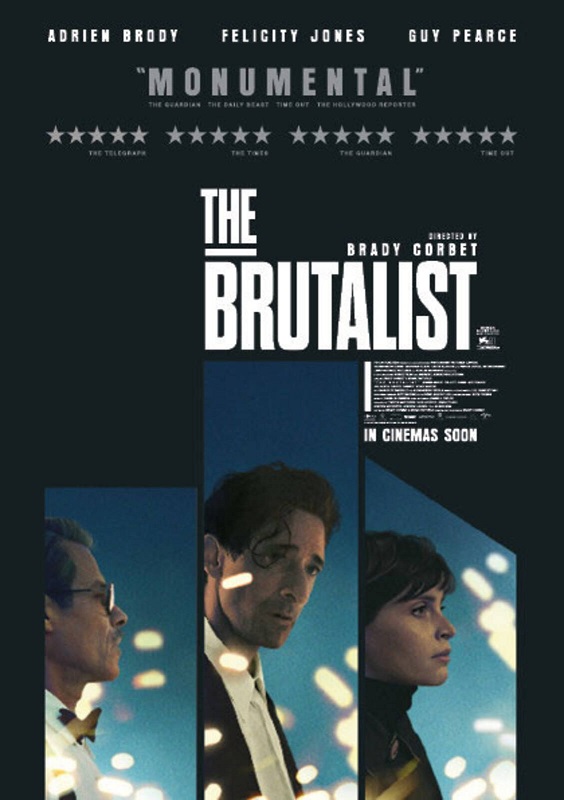

2024 – The Brutalist
Wow. This movie was about three and a half hours long, and there was no need for it. This movie was pretentious and self-important, again, for no reason. The pacing was slow and drawn out. And while they did not take long, there was an overture and an intermission screen. I’m no editor, but it seems to me that they could have taken the run time down to about two hours, and still had a good movie
Because, to be sure, this was a good movie. It was well-constructed and well-filmed. The acting was top-notch and the 1940s send 50s time period was respected. But there were just so many scenes that went on too long. At first, I thought the score was strange, but after a while, I got used to it, and it fit. It was a lot of enigmatic soundscapes with dissonant pizzicato flourishes in the background, but it ended up working with how weird the movie became, in the end.
My first impression what that there wasn’t much story in the narrative. But the more I think about it, the more I understand that there really was a lot that happened, and it seems to fall in line with other films that have been nominated for Best Picture. It was about human struggle and the human capacity for cruelty. The subplots that took place around the lead character all had an effect on his journey in good and bad ways, and although he wasn’t perfect, he was a good man, a likable man, a passionate man.
This is the story of an educated immigrant, Laszlo Toth, impressively played by Adrian Brody. Before WWII, he was a successful architect. But as a Holocaust survivor in America, he was nobody. He tried to work for his cousin, Atilla, played by Alessandro Nivola, but the relationship turned sour when crazy Atilla accused him of ruining his furniture business and making a pass at his wife, two accusations that were completely unfounded. After this, be becomes a homeless heroin addict.
The rest of the film follows his struggle to establish himself as an architect in Pennsylvania, with the help of a wealthy businessman as a patron. That man is Harrison Van Buren, played by Guy Pearce. He gives Laszlo a place to live and an architectural project to keep him employed. He also uses his connections to bring Laszlo’s wife Erzebet, beautifully played by Felicity Jones, and his emotionally traumatized niece Zsofia, played by Raffey Cassidy, out of Europe into America.
I think one of the problems with the narrative is that there wasn’t conflict in the movie until the very end. The worst that happened was that Harrison brought on an inferior architect to bring the costs of Laszlo’s project down, damaging his creative vision, and Laszlo became angry. Then, there was a terrible accident while transporting building materials that derailed the project until insurance claims could be settled. After two years, Laszlo is brought back in to continue the work.
But then the movie turned weird. While on a trip to a marble quarry in Italy, Harrison finds Laszlo high on heroin, and straight up anally rapes him, revealing that he has been physically attracted to him all along. What the…? It was from out of left field! Erzbet angrily confronts Harrison at a business dinner party and calls him a rapist in front of his guests. Harrison runs away into the night, never to be seen again. Laszlo and his wife return to Europe, and years later Laszlo is celebrated as a master architect who is being honored at a fancy gala.
Now, all that being said, the acting was incredibly good. Brody and Pierce both stood out as exceptional, and I can understand why Brody took home the Oscar for Best Actor. He totally deserved it. Hi was able to maintain his accent perfectly from the beginning of the movie to the end, which is always impressive when it is done well. And there were several scenes where he had to break down into tears and sobbing, something we knew he was capable of after seeing him in The Pianist in 2002. And I have to give special props to Joe Alwyn who played Harrison’s smarmy son, Harry Van Buren. He was so easy to hate.
I also loved Felicity Jones as Erzebet. There was a subplot which involved her health problems, as she was dealing with osteoporosis. While she is having an episode of extreme pain, Laszlo soothes her pain with heroin, almost killing her.
But what I liked about her character was the intelligence and charm she displayed in social situations, and the fact that she clearly loved Laszlo. She was perfect.
This movies was good, but I think it might have been better if they had just cut about an hour and a half out of its bloated run-time. I think I can see why this was nominated for a best picture. There were a few scenes with some intense drama, and the actors didn’t shy away from it. It really was a pretty good movie, just not as good as it thinks it was. Like I said, if felt just a little too self-important. And before I forget, I have to mention the credits that were done in a way that seemed to somehow reflect artistic architecture. The opening credits scrolled across the screen horizontally. The ending credits scrolled diagonally. It was a simple little interesting touch that I found effective for the story that was told.
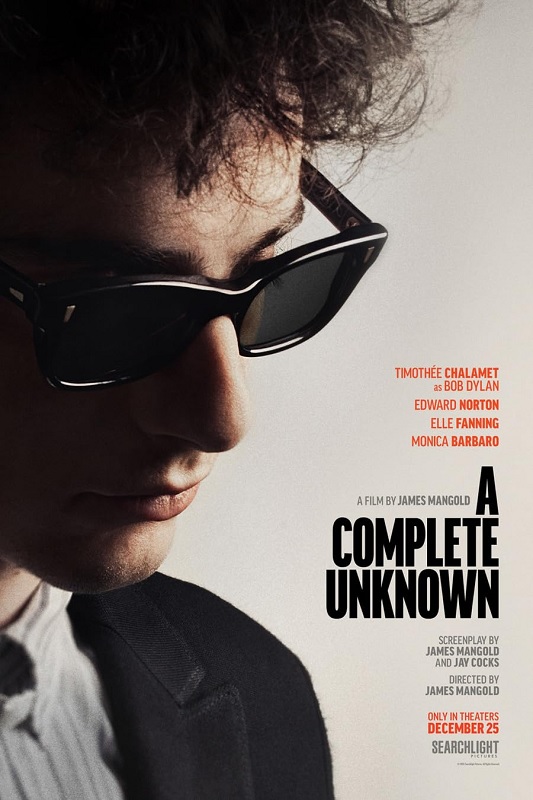

2024 – A Complete Unknown
Well, it seems to be the trend in recent years to make biopic films about talented musicians, and the critics are just loving them. And while this very specific genre is certainly not new, it gained huge popularity after the success of Bohemian Rhapsody. But then we got other movies like Rocketman, Elvis, and Bob Marley: One Love. It is definitely a trend. But let me just say, I’ve never been a huge fan of Bob Dylan’s music. It’s his voice. He was never a very good singer. But apparently, he was an incredibly talented poet and songwriter.
I don’t mind that there was a biopic made about this small portion of his career. But I think this movie failed on a couple of levels. For example, it wasn’t able to convince me that his music was overly special or influential. And it only gave me a snapshot of a relatively short period in his long and prolific career. What I mean is, if I wanted to know anything about Bob Dylan at all, I wanted to know more than this movie gave me. What I was left with were insights into his love life, and the sense that even though he had major talent as an artist, he was kind of a jerk, something that is mentioned more than once. It didn’t give me sympathy for the character. It just made me want him to be nicer to those who loved him. You see, I did a tiny bit of reading and discovered that the real Dylan is one of the best selling musicians of all time, but the movie never let the audience in on that bit of information, either through story or dialogue.
But I guess the acting was alright. Timothy Chalamet, who was also in another Best Picture nominee in 2024, Dune II, starred as Bob Dylan. Was Bob consistently stoned from 1960 to 1965? Because that’s how Chalamet portrayed him. My research says no. But there were three other actors who I liked better. First was Edward Norton playing Pete Seeger. Second was Elle Fanning playing Bob’s long time love interest, Sylvie Russo. She was particularly good. And the third was Monica Barbaro playing Joan Baez. And I’ll give an honorable mention to Dan Folger as Albert Grossman, and Norbert Leo Butz as Alan Lomax.
But I don’t want it to sound like I thought the movie wasn’t good. It was good enough. I just didn’t get the movie I was expecting or wanting. That doesn’t mean it wasn’t worth watching. It just means that I need to check my expectations at the door and enjoy it for what it was. I liked that it was a period piece that took place in the 60s. The costumes and the hairstyles were all appropriate, reflecting the styles of the early decade.
And then there was the music. Chalamet apparently sang forty Bob Dylan songs in the movie, and here is where I really have to give him his due. I mentioned that I don’t particularly care for Dylan’s voice. And to his credit, Chalamet imitated it incredibly well. Many of the Dylan songs he sang were only tiny snippets, some without instruments, and in some he was practically mumbling as the character was writing the music. But they were there. But the few songs that he sang as part of a performance were a spot on match to the real Bob Dylan’s cadence and style.
However, Monica Barbaro was the voice that impressed me the most. She really has a great singing voice and I enjoyed listening to her. You can tell she’s had some training. She sounded good whether she was singing a Baez song as a solo, or if she was doing a duet with Dylan. There were also a few scenes with Boyd Holbrook as Johnny Cash, and he did a pretty good imitation as well. And also, I was impressed with Edward Norton. Who knew he was more than just a good actor. He sang a bit and sounded good doing it.
There were a lot of little moments in the movie that were good. True, I found the overall pacing slow, and I didn’t really have much interest in the subject matter as it was presented. But there were moments where my interest was held. There are two that spring to mind. One was the moment in which Chalamet sang Song to Woody for Seeger and his idol Woody Guthrie, played by Scoot McNairy. The actor actually played the guitar himself and sang the entire song. Chalamet did a fine job and sounded very much like Bob Dylan.
The other scene that grabbed my attention was the one where Dylan races to the dock where Sylvie is leaving him for the last time. He has tried to invite her back into his life, but she tells him “It was fun to be on the carnival train with you, Bobby, but I think I gotta step off. I feel like one of those plates, you know, that the French guy spins on those sticks on the Sullivan show.” He replies “Oh, I like that guy.” And I love what she says in response. “I’m sure it’s fun to be the guy, Bob. But I was a plate.” And Elle Fanning really sold the moment. She did a fantastic job. And so the trend continues. More musician biopics are being made, but if you aren’t into that musician or the music they made, a film about them is really going to have to work to make you interested in their story. And while the movie had its good points, I was mostly uninterested, and the movie didn’t do enough to make me want more. But what do I know? Critics loved it.
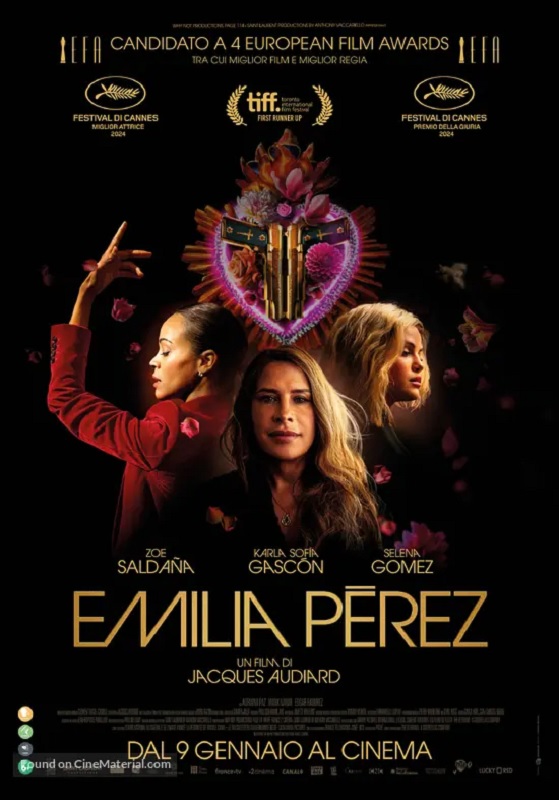

2024 – Emilia Perez
Ok, what the heck did I just watch? This movie was strange, bordering on bizarre. It was certainly unique in a very artistic way. And knowing next to nothing about it when I sat down to watch, it surprised me in a good way. It was a musical… kind of. It was a drama… mostly. It was a suspense thriller… but not really. Wikipedia calls it a Spanish-Language French musical crime film, though I would call it a drama, as well.
It had a relatively small main cast which included Zoe Saldana, Karla Sofia Gascon, Selena Gomez, Adriana Paz, Edgar Ramirez, and Mark Ivanir. They all did a very good job, though the movie was really about Saldana’s character, Rita Mora Castro. The story begins with her and ends with her, and follows her journey from start to finish, though she won the Oscar for the Best Supporting Actress category. She is a lawyer in Mexico who is disillusioned with her job defending criminals. She is recruited by drug cartel crime boss Manitas Del Monte, but for a job that was as surprising to me as it was to her. He wants to undergo gender reassignment surgery, leaving his wife, his sons, and his life of crime behind him.
Rita accepts the job for a massive amount of money and finds Manitas a surgeon, relocates his family to Switzerland, tells them Manitas has been killed, and then disappears with her payment. The drama comes when a woman, now called Emilia Perez, finds her and recruits her once again to bring his/her family to Mexico City because she misses her children.
It was a strange concept for a plot, but what made the movie exponentially stranger was that it was a musical. I have a friend who doesn’t care for musicals because he can’t get past the idea that people in a perfectly normal story would, for no apparent reason, start to sing and dance, and then, when a song is over, just go back to regular acting, and all the while, pretending that nothing out of the ordinary just happened. This movie would have driven him crazy because the music was sly in the way it infiltrated the narrative. Someone would be talking, just ordinary dialogue, when suddenly I would realize that they were talking in rhythm. A percussion beat would creep in beneath them, and without realizing it, I would be listening to a song. Then, the extras in the background would start to dance in highly choreographed sequences that were wonderfully executed.
There was a scene near the end of the movie where Rita is bringing in a team of rough banditos with some major firearms to rescue Emilia, who has been abducted and is being tortured. There is a dramatic underscore as the men are preparing their weapons for the mission. But then, unexpectedly, I noticed that the men were moving in unison, the clicking of their guns as they are being loaded and readied for combat, became part of the music. It was almost subtle in how it slipped in under the radar.
The cast did a great job, but I really have to mention Karla Sofia Gascon. The first time she is on the screen, I totally believed she was a man. The makeup department outdid themselves. As the cartel kingpin, she/he looked scary and intimidating, even as he was telling Rita that he wanted to be a woman, and not because he wanted to go into hiding, but because he’d wanted to be a woman since childhood. But as I think about it, those few scenes were darkly lit, helping to hide the illusion. Also, even while watching the movie, I was wondering why Manitas spoke and sang without moving his lips. I thought it was a character choice, but I think maybe it was also to help hide the fact that the female actress was made up as a different gender. Honestly, I bought the illusion, hook, line, and sinker.
Selena Gomez, playing Manitas’s wife, Jessi, also did a great job. Once she was dropped off in Switzerland, I thought I’d seen the last of her, but when she was brought back in later, she created a realistic character with some depth and a relatable arch. She feels manipulated and bound to the will of her dead husband as a sister-in-law she has never met suddenly begins to steal her children from her. The climactic scene, where Emilia is near death, she comes clean and tells her who she actually used to be. Jessi, who is part of the team who has tortured Emilia, is still in love with the husband she had thought dead, and she has one of those classic “What have I done?” moments. Gomez did a great job!
But of course, I think the stand-out of the cast was Saldana. She did it all. She handled the singing, the dancing, and the drama perfectly. I loved the scene where Emilia reveals herself to Rita in London. That look of shock and fear in Rita’s face was perfect as she connected the dots and realized who she was talking to. And who knew Saldana could sing and dance like that? She really did a fantastic job. But again, I think she was really the main character, not Emilia.
This movie surprised me in several ways, and I think director Jaques Audiard really did some things that were bold, unique, and ultimately fascinating to watch. The unconventional story, and the way in which it was told, was captivating on the screen. It was visually interesting, and the soundtrack was unexpected. I also have to give a big thumbs up to the choreographer, Damien Jalet. But all that being said, I don’t really understand why there are so many critics of the film. Mexico criticized it on a cultural level, the LGBTQ community did so in defense of trans-people, and both critics and audiences called the film insensitive to drug traffickers. People just seem too eager to be offended. Just relax and enjoy the movie. I see it as a unique piece of art, and one that I wouldn’t mind watching again.
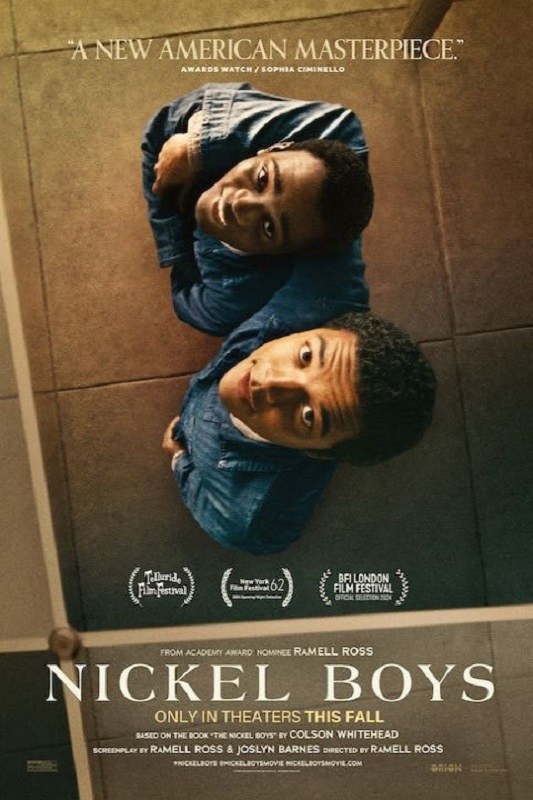

2024 – Nickel Boys
This was an interestingly filmed movie, but it was difficult to watch, not because of its story content, which I really liked, but because of the way in which it was filmed. Though it is certainly not the first movie to ever do it, the movie was shot using a first-person perspective. It was supposed to be as if we, the viewers, were seeing things through the actual eyes of the main protagonist. Now, don’t get me wrong. I applaud the director for choosing to make the movie this way. It doesn’t just show the view the story like most movies do. Instead, it forces the viewers to watch the story as if they, themselves are part of the narrative.
The problem with this is that it is physically uncomfortable to watch. Much of the camerawork had the constant shaky motion of a handheld camera, which, after a while, tends to give me a stomach ache. If the character was lying on his side in a bed, the camera was angled sideways in a disorienting way. And the camera wasn’t always focused on a person’s face or the action taking place in a scene. Instead, if the character is looking at his feet, that was all we got to see. We could hear what was going on, but that was all. If he is talking to someone, but not looking at them, we don’t get to see who is talking. And I think a certain portion of the film’s emotional content was lost because we couldn’t see the face of the person through whose eyes we are supposed to be looking.
But like I said, the story was good and engaging. It was about the strong friendship that developed between two black boys at Nickel Reform School in the 1960s. The school was in Florida, and was of course, segregated, and the horrible abuse and frequent murders of the students by the corrupt staff. After watching the film, I was not surprised to learn that the fictional Nickel was based on a real school known as Dozier School for Boys, a place where such unforgivable abuses actually took place. Most of the victims were black.
The two boys, Ellwood and Turner, played by Ethan Herisse and Brandon Wilson, quickly become friends. Elwood is there because of a crime he didn’t commit. One of my favorite characters in the movie was the woman who raised Elwood, his grandmother, Hattie, wonderfully played by Anjanue Ellis-Taylor. She is certainly a supporting character, but she seemed to steal the scene every time she was on the screen. She was so beautifully real and earnest in her love for her grandson.
Turner was more cynical than the cerebral Ellwood, believing in the worst in others and in the school, and he was rarely disappointed. The two boys looked after each other and supported each other to get through the dangerous experience of being at the school. And after seeing the first half of the movie through Elwood’s eyes, the second half changes the perspective, allowing us to often see and experience the story through Turner’s eyes. There were only a few scenes in which the two are having a conversation, where the perspective keeps changing from one boy’s eyes to the other, making the narrative unfold like a regular film.
Both the lead actors did a really good job, but it was pretty much impossible to tell if they had a good on-screen chemistry, since they were only on the screen at the same time once. In the scene, the two were looking into a mirror together. That was it. They were clearly good friends, but I had difficulty gauging the emotional connection between the two actors.
Another aspect of the narrative was the non-linear story-telling. There were scenes where we jump into the future and follow the life of Ellwood after he has grown into adulthood. He is a man who has his own business and a wife. We see him using the internet to research the School and the murderous crimes that were regularly committed there. There is an official investigation in the media that is asking for witnesses. Ellwood eventually decides to testify. These future scenes were shot just slightly different than the rest of the movie. Instead of looking through Ellwood’s eyes, the camera is fixed on the back of his head, showing things from his perspective, except that now we are separated from him. There is a disconnect.
And I think the twist ending of the story explains this inconsistency. While at the reform school, Turner learns that Ellwood is to be quietly executed by the school officials for unsuccessfully trying to inform the public about what has been happening at Nickel. To save his friend, Turner plans an emergency jailbreak. The two are quickly tracked down, and as they run, Ellwood is shot and killed. Turner escapes, and when he grows to manhood, he takes Ellwood’s name. He also takes his convictions and his courage, which allows him to testify against the atrocities that he survived at Nickel. It was a good movie, and again, I applaud director RaMell Ross for choosing to make the movie from the first person perspective, first that of Ellwood, and then that of Turner. It was a bold choice, and it worked for the story that was being told. However, it was, at times, a physically difficult movie to watch. But the story was good. The cast and the acting were good. And the attention to the 1960s period aesthetic were fantastic. This is definitely a must-see movie, as long as you can handle the shaky hand-held camera action.


2024 – Wicked – Part 1
I’ll start this off by saying that this was a gorgeous movie. Visually, it was stunning. The sets and costumes were absolutely perfect. The music was amazing. The two leads were wonderful. I have to say this is one of the best stage to screen musical adaptations I have seen in a very long time. They stuck close to the source material, which is great. By doing so, they didn’t upset fans of the beloved stage show, and they kept the good things that made the stage show popular.
So let me just get two things out of the way quickly. What didn’t I like? First, there were two roles that were terribly miscast. Madame Morrible, played by Michelle Yeoh, and the Wizard, played by Jeff Goldblum. They made the point of casting actors who could sing in every other role, but these two, while they are very good actors, couldn’t sing. It made no sense. I mean, they already got Ariana Grande, a popular artist who has made a career singing, and Cynthia Erivo, a trained Broadway singer. Both of them did a great job, but the school teacher and the Wizard… not so much.
Second, there was a new scene and new music written for the film that takes place when Elphaba and Glinda arrive in the Emerald City. But it was only done so that they could shoehorn in Idina Menzel and Kristen Chenoweth. Their cameo scene felt forced and unnecessary, and it took me out of the story because it was nothing more than blatant fan-service.
But now, on to the good stuff, because there was a lot of it, and a good place to start is Erivo and Grande. They were simply fantastic. True, their voices were completely different than the Broadway cast recording that we all know and love, but they took the music and made it their own. Erivo was especially good. Her voice really fit the music and she elevated the character in unexpected and remarkable ways. She has a wonderful tone full of emotion and depth. And Grande, while using a much more breathy pop sound in her singing, still had the ability to hit those high soprano notes with clarity and precision. And it was clear that they both understood their characters. And the actors playing Fiyero and Boq, Jonathan Bailey and Ethan Slater, were perfect, too.
The costumes were particularly memorable. They were fanciful, whimsical, and again, remained very true to what was originally intended in the stage show. Glinda’s wardrobe was especially beautiful. And also, I loved the gorgeous gowns given to Madame Morrible. Elphaba’s wardrobe is a little one-note, but always appropriate, and she looked good in black. The sets were elaborate and incredibly detailed. They looked fantastic on the screen… all except for one. The library set with its revolving wheel bookshelves was silly, impractical, and were an injury lawsuit waiting to happen. Whimsical is good, until it just becomes dumb.
One of the things I loved about Wicked is that the filmmakers knew that they were working with a different medium than a stage production. They could do things with visual effects and CGi that can’t be done in a live environment. There was the flying, of course, but it was so much more than that. A blatant and obvious example is Glinda’s flying bubble. For the Broadway show, the actress is harnessed into a big circular metal frame that is suspended from wires. Here we get a computer generated bubble that looks fantastic. But they used more subtlety than that in other effects, like when Elphaba sings I’m Not That Girl. The woods through which she walks is alive with shadows and glowing spots of living color that turned the song into a magical number that was mesmerizing.
And the way that the movie ended was phenomenal. It closed at the end of Act 1 with the song Defying Gravity. First Erivo’s voice was amazing. And again, they did things with the medium of film that couldn’t be done on a stage, like when Elphaba leaps from the tower. As she is falling, we see her remembering pivotal moments in her life that inspire and drive her to fly for the first time. It was beautifully done and was exciting to watch. And the joy and freedom that come to her with her newfound power are intensified because now we can see close-ups of her face. We can read her emotions as she victoriously defies gravity.
Ok, sure they added a bunch of things that weren’t in the Broadway show. How else could they have expanded the first act of the live production into a run-time that exceeded the entire show? But I think that most of what they added worked. And they did it all without losing the aesthetics and charm of the source material. I especially liked the intimate scene in the Ozdust Ballroom where Elphaba and Glinda finally become true friends. It actually brought a tear to my eye.
And finally, I need to briefly mention how much I liked the fact that we were finally able to get realistic talking animals, courtesy of some pretty remarkable CGI, and not just an actor with animal prosthetics and makeup. I liked professor Dillamond voided by Peter Dinklage. This was a wonderful fantasy musical that really lived up to the hype and the expectations. The movie version has been a long time coming, but it has been worth the wait. I loved it, and I can’t wait for part two!


2024 – The Substance
This was a strange, strange movie. I would have to categorize it as a body horror movie, first, a fantasy, second, and a social commentary, third. It stars Demi Moore as Elizabeth Sparkle, a celebrity actress and fitness icon, who is past her prime and therefore no longer desirable by the industry, which is represented by her TV show’s producer, Harvey, played by Dennis Quaid.
Now, I don’t mind watching a good horror movie every now and then, but I am easily disturbed by body horror. So the very genre of this movie didn’t really appeal to me, but I can appreciate many aspects of the film. It easily kept my interest, and even had me thinking about it days after watching it. The acting was good, especially Moore. The visual effects were pretty amazing, as were the makeup effects. The music, by composer Raffertie, was weird, but it fit the strange story quite well. And despite all the grotesque imagery on the screen, the film had an almost amused or campy quality that really came out in the last few minutes.
In a nutshell, here is the plot. Elizabeth is contacted by a mysterious company offering a black market drug that promises to make her younger and more beautiful. Here’s where the body horror comes in. The injected drug causes Elizabeth to fall unconscious. Her back splits open, and a beautiful young woman crawls out of the opening. In order to stabilize herself, the new girl, who names herself Sue and is still the same woman, now played by Margaret Qualley, must extract a fluid from the original body. She must also switch places with her every seven days so the fluid can replenish. Otherwise her own body will begin to break down. A balance must always be maintained. But Sue, in her lust for fame and success as Harvey’s new star, abuses that balance and extracts more fluid than she should, causing Elizabeth’s body to rapidly age into a deformed elderly crone.
That’s the premise, and I have to applaud the filmmakers for the originality of the plot. It was creative and yet very cohesive at the same time. I hate it when movies establish their fantasy own rules, but then fail to abide by those rules. But The Substance does a good job of setting up these elements of the narrative, and then sticking with them, and even going beyond them to logical and extreme ends. It all made sense, in a horrific and bizarre way.
Just as a quick note, I have to mention one thing that I didn’t buy, but I get it. The persona of Sue was supposed to be more beautiful than Elizabeth, but it didn’t really work for me. I thought Demi Moore was prettier. I think maybe they should have either found an actress who resembled Moore, or used de-aging technology on her to allow her to play the other part herself. But I get why they couldn’t do that. Nobody could recognize her as the same woman, or the plot wouldn’t work.
Moore’s performance was brilliant. She was amazing both before and after her body started to disfigure. In the first half of the film, her desperation to regain her youth was strong, making it believable that she would inject herself with a mysterious and dangerous substance. And as she began to age, a process that started with her finger, and eventually spread to cover her entire body, her shock and disgust with her own reflection was perfectly portrayed. Moore really pulled it off and I think her Best Actress nomination was well-deserved.
One scene in particular stood out to me as particularly powerful. She is trying to remind herself that she is still alive, and schedules a date with a man in whom she really has no interest. Her face is still normal, but she sees already herself as disgusting when she looks in the mirror. Her extreme frustration causes her to make several attempts to making herself up. Each time she becomes more and more violent as she wipes the makeup from her face to begin again, until she is simply smearing lipstick all over her cheeks and messing up her hair, making herself look more and more disfigured.
As I watched the movie, I remember asking myself, more than once, how much further the outrageousness of the plot would go. How much more over-the-top would the narrative get? But the story just kept going, kept progressing, and getting weirder and more grotesque. In the end, Sue murders Elizabeth and tries to use the leftover activation drug to give herself one final night of beauty. Instead, she transforms into a monster who, in her final disintegration, ends up spraying an audience with an impossible amount of blood. In fact, during filming, they used an actual fire hose to cover the actors, the extras, and the set with enough blood to drown n army.
But it was the movie’s social commentary on ideas of youth and beauty in our modern society that stood out to me as somewhat dramatic, or at the very least poignant. Do we, as a culture, constantly cast aside people once they are no longer young and attractive? Do we fear aging so much that we would do almost anything to regain the health and vitality that we once possessed? Or is it simply that our focus on youth and beauty is so strong and unhealthy that it ultimately turns us into monsters. I think maybe the answer is yes to all of the above.












